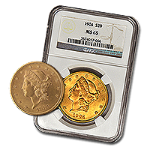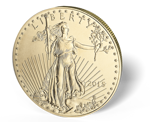- 888-696-4653
-
888-696-4653
Call Us
-
0
Cart
-
Open Account/Login
Open Account/Login
Christmas may be over, but gold and silver investors got a late gift in the form of price per ounce increases of both metals on December 26. Specifically, gold was up about $9 (0.7%) on Thursday, while silver increased 44 cents (2.3%). The increases, while not huge, were welcome news to investors of both metals, as 2013 has not been a banner year for either. Both metals will end the year lower than where they started.
Trading was still thin due to the Christmas holiday on Thursday; many European markets remained closed, though the NYSE opened. The post-Christmas increase was driven by a growth in physical gold and silver from Asia, as well as unemployment benefits claim decline.
Asia demand, driven primarily by China, is expected by many to continue increase going into the new year, with the approach of many Asian holidays that include gold giving as customs.
Physical silver and gold are also popular gift ideas in the US. Investment-minded gift givers understand the benefits of giving physical precious metals from a financial perspective. The long term history of both has always been positive, and investing in physical gold and silver (as opposed to stock market GLD and SLV shares) keeps the investment separate from stock market collapses. Also, gold and silver is often given in the form of jewelry during the holiday season, and is found in many other popular gift items such as cell phones and tablets.
While the year on the day after Christmas is positive for gold and silver, the year as a whole has slumped. Gold will end the year with a price about 25% less than early January 2013, its first annual loss in 13 years. Silver started the year around $30 per ounce, but fell steadily throughout the first half of the year. It saw a surge in August, but will likely end the year at or just below $20 per ounce.
With numbers like these, potential investors sometimes have a hard time seeing the value in both metals, and rightfully so. If you only look at 2013, the metals are bad performers. But look back further, and you’ll start to see the real value of both, as well as the real opportunity to invest now, while the prices are low relative to recent years. Both have increased exponentially over the past few decades, and have performed consistently well as long term investment options.











